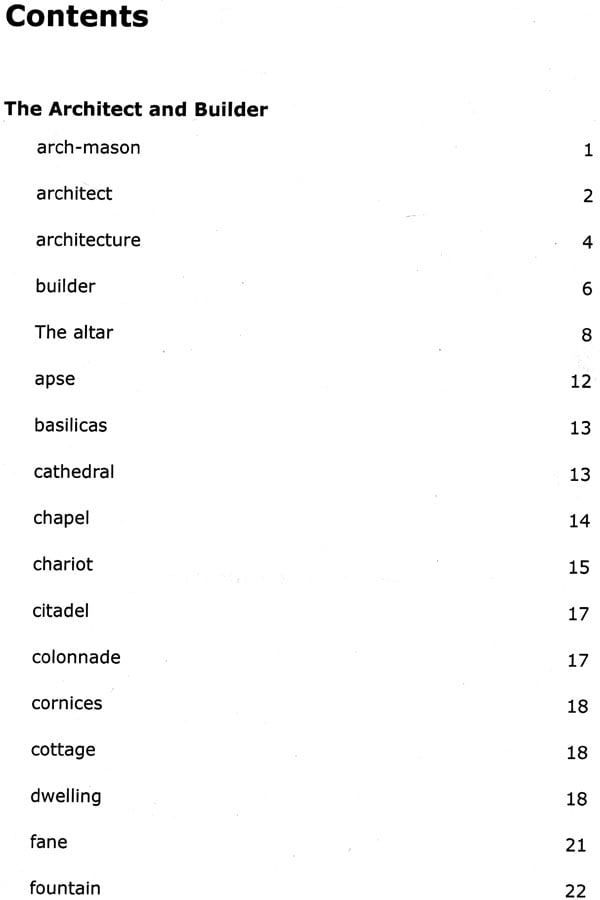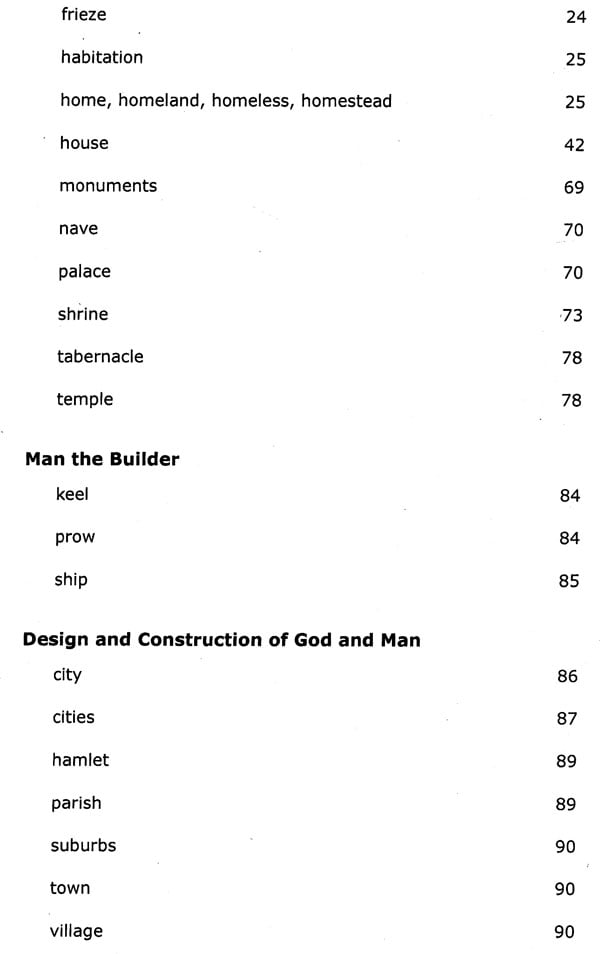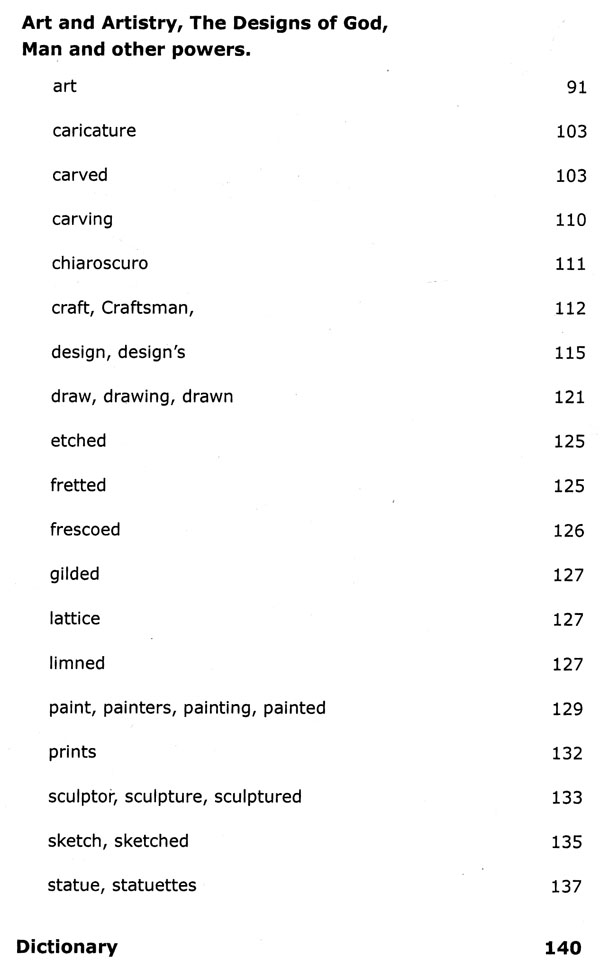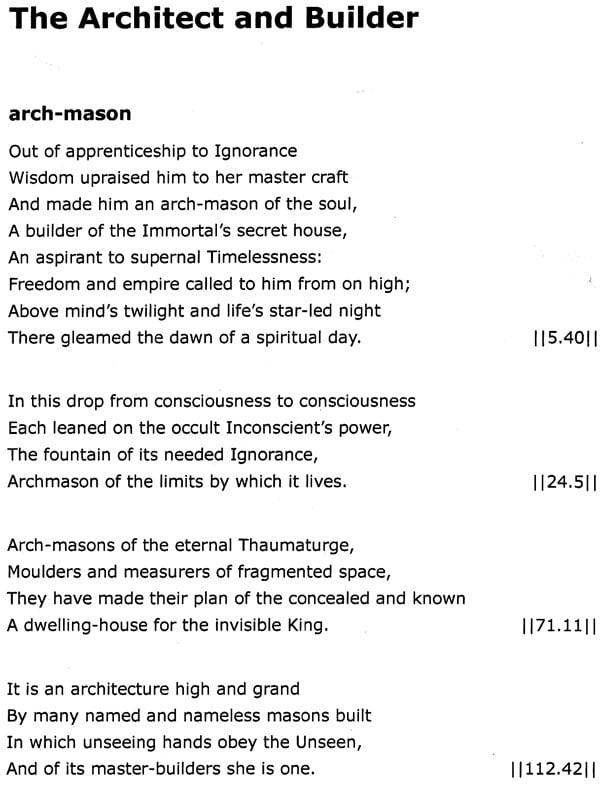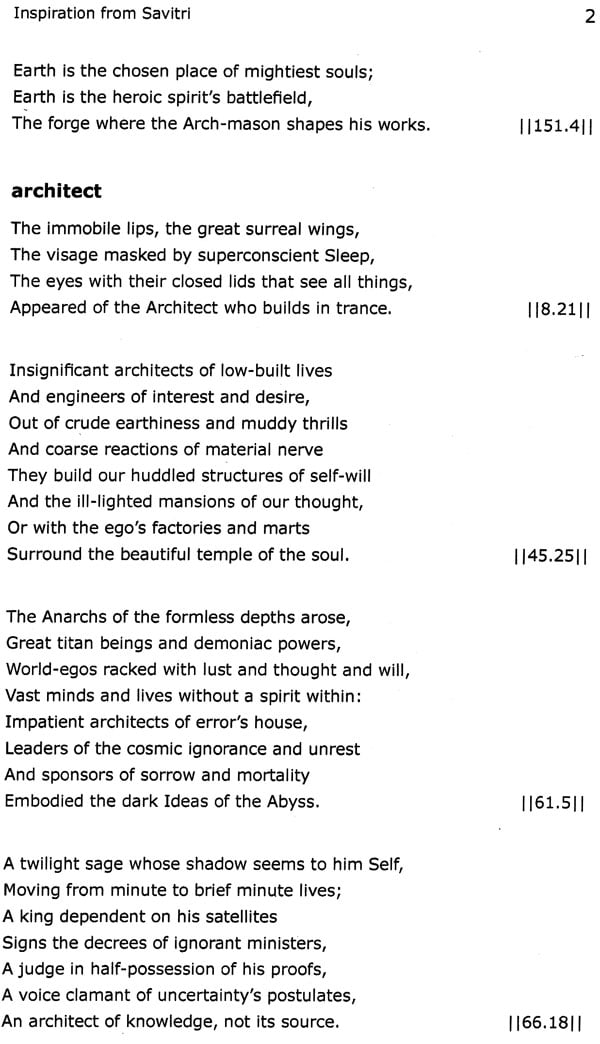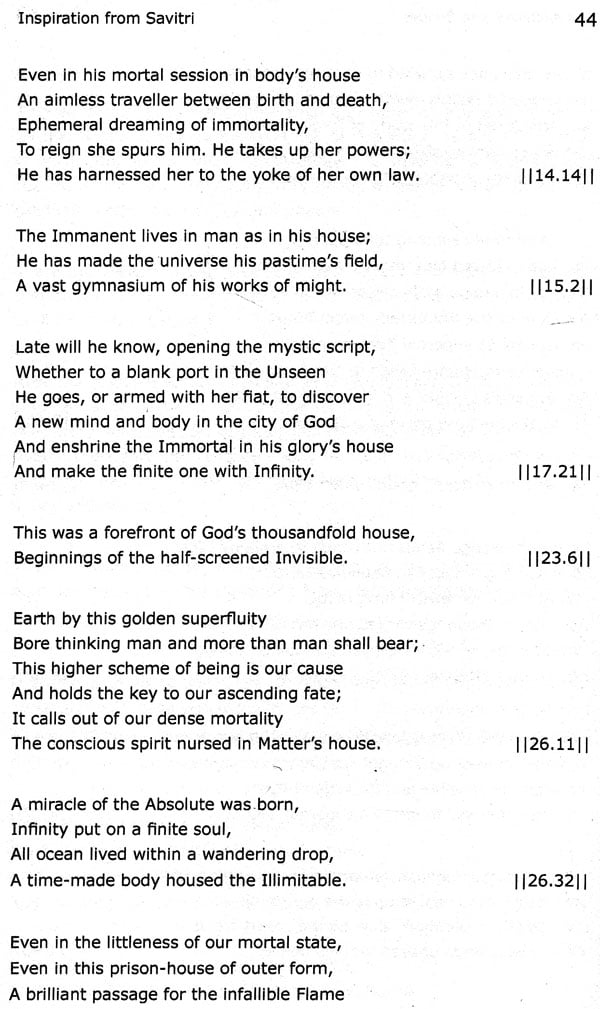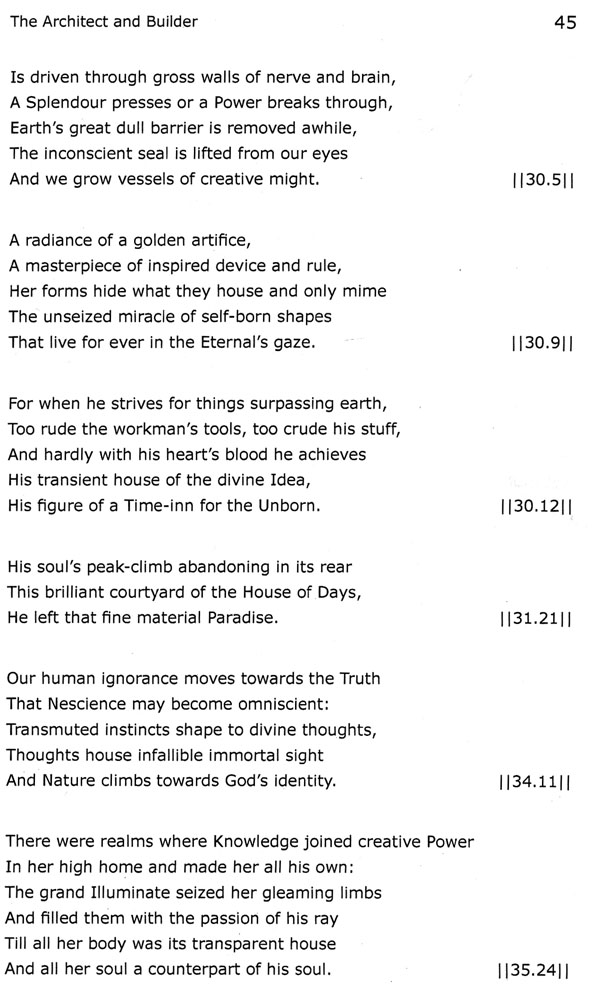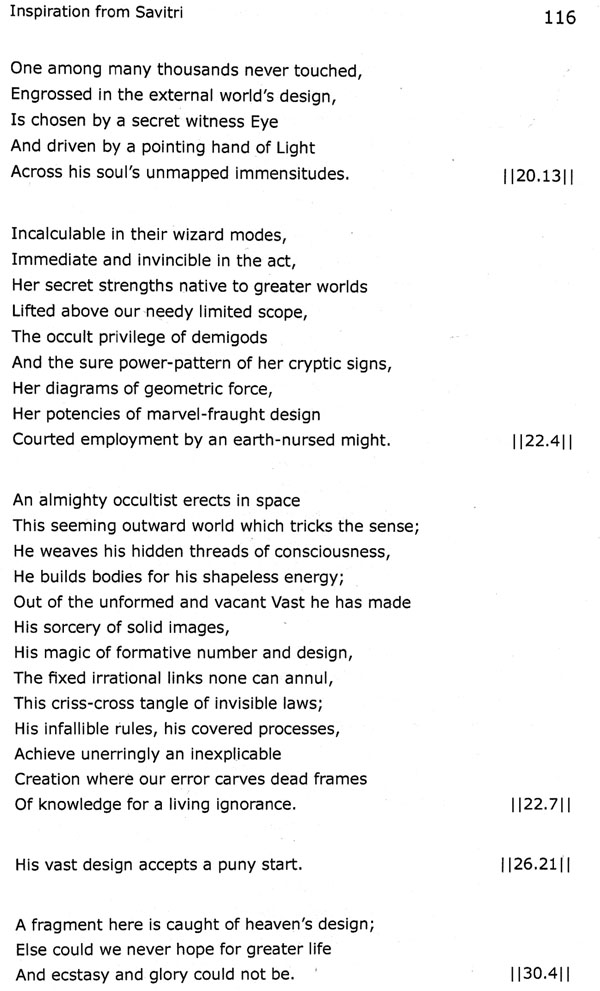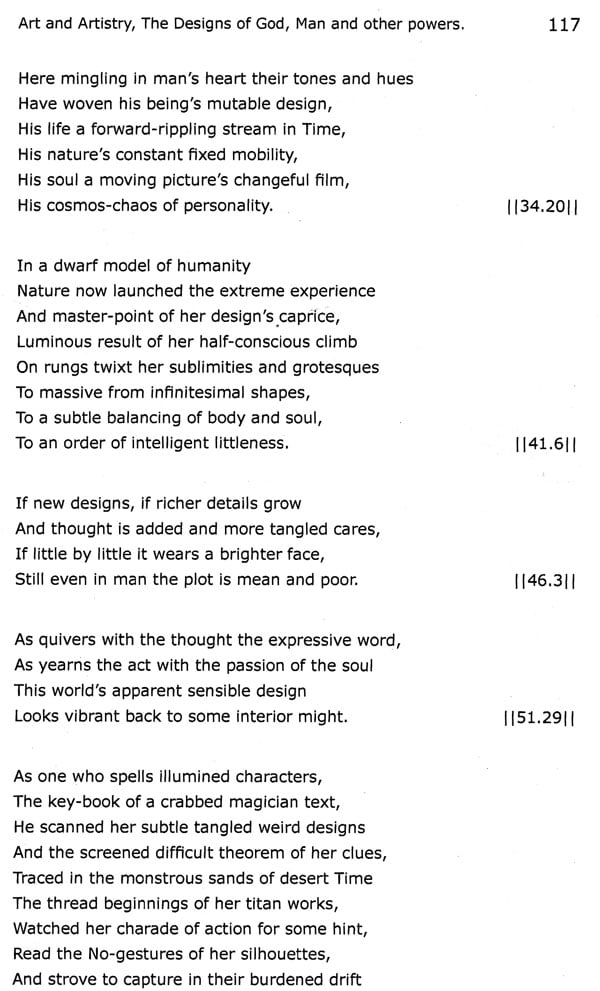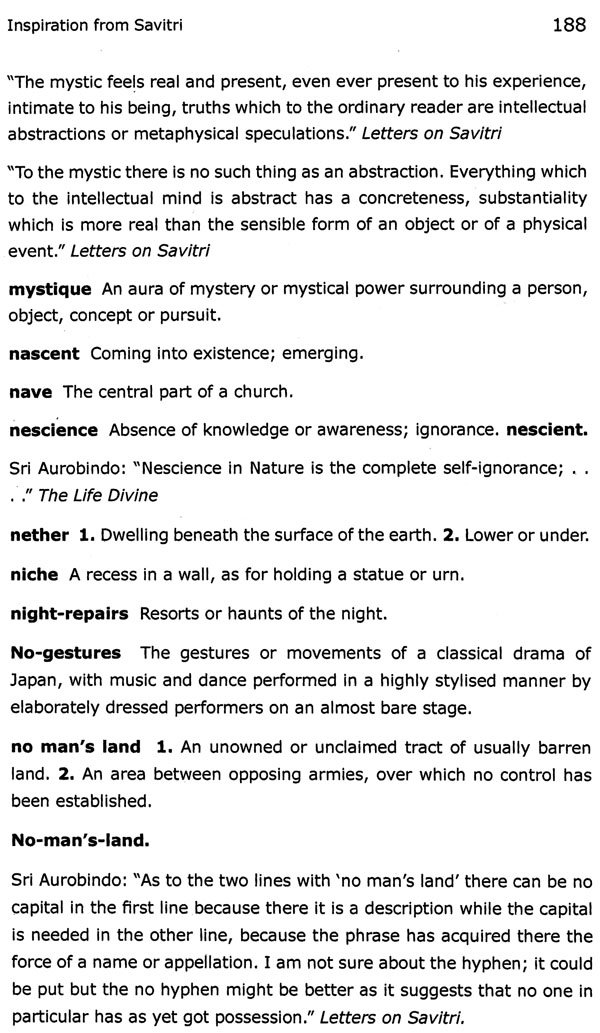
Inspiration from Savitri: Art, Architecture and the Constructions of Man and God (Volume 15)
Book Specification
| Item Code: | NAV741 |
| Author: | Narad (Richard Eggenberger) |
| Publisher: | Savitri Foundation |
| Language: | English |
| Edition: | 2014 |
| ISBN: | 9789382547693 |
| Pages: | 242 |
| Cover: | PAPERBACK |
| Other Details | 8.50 X 5.50 inch |
| Weight | 260 gm |
Book Description
Sri Aurobindo's epic, Savitri, his Magnum Opus, is replete with splendid images of this and other worlds. In fact, every aspect of human endeavor, human consciousness, human failings, including man s potential, is shown in the clearest detail, possible only by the seer and Avatar of the Supramental.
We must remember also that Sri Aurobindo wrote nothing for 'beauty for beauty's sake, nothing for mere alliteration, imagery, etc. He has written the following in his letters to a disciple/poet.
Here are some passages from his letters about writing Savitri.
"I lay most stress on then are whether each line in itself is the inevitable thing not only as a whole but in each word; whether there is the right distribution of sentence lengths (an immensely important thing in this kind of blank verse); whether the lines are in their right place, for all the lines may be perfect, but they may not combine perfectly together —bridges may be needed, alterations of position so as to create the right development and perspective etc., etc. Pauses hardly exist in this kind of blank verse; variations of rhythm as between the lines, of caesura, of the distribution of long and short, clipped and open syllables, manifold combinations of vowel and consonant sounds, alliteration, assonances, etc., distribution into one line, two line, three or four or five line, many line sentences, care to make each line tell by itself in its own mass and force and at the same time form a harmonious whole sentence — these are the important things. But all that is usually taken care of by the inspiration itself, for as I know and have the habit of the technique, the inspiration provides what I want according to standing orders. If there is a defect I appeal to headquarters till a proper version comes along or the defect is removed by a word or phrase substitute that flashes — with the necessary sound and sense. These things are not done by thinking or seeking for the right thing — the two agents are sight and call. Also feeling — the solar plexus has to be satisfied and, until it is, revision after revision has to continue. I may add that the technique does not go by any set mental rule — for the object is not perfect technical elegance according to precept, but sound-significance filling out word-significance. If that can be done by breaking rules, well, so much the worse for the rule." Sri Aurobindo writes further:
`Do not forget that the Savitri is an experiment in mystic poetry, spiritual poetry cast into a symbolic figure. Done on this scale, it is really a new attempt and cannot be hampered by old ideas of technique except when they are assimilable. Least of all by standards proper to a mere intellectual and abstract poetry which makes "reason and taste" the supreme arbiters, aims at a harmonised poetic-intellectual balanced expression of the sense, elegance in language, a sober and subtle use of imaginative decoration, a restrained emotive element etc. The attempt at mystic spiritual poetry of the kind I am at demands above all a spiritual objectivity, an intense psycho-physical concreteness.
The mystical poet can only describe what he has felt, seen in himself or others or in the world just as he has felt or seen it or experienced through exact vision, close contact or identity and leave it to the general reader to understand or not understand or misunderstand according to his capacity. A new kind of poetry demands a new mentality in the recipient as well as in the writer. In this volume, Volume 15, Art and Architecture in Savitri, we look at the many and marvelous ways Sri Aurobindo gives us passages and images of art and architecture.
**Contents and Sample Pages**
